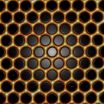(Press-News.org) A team of researchers led by scientists at The Rockefeller University has identified a novel mechanism by which influenza interferes with antiviral host response. The finding, reported in this week's issue of the journal Nature, shows that the immunosuppressive NS1 protein of the influenza A virus hijacks key regulators of antiviral gene function by mimicking a core component of gene regulating machinery. The results they describe have major implications for our understanding of the biology of seasonal influenza virus and its pathogenesis. This research also suggests a possible target for a new class of antiviral and anti-inflammatory drugs.
The researchers, led by Alexander Tarakhovsky, head of the Laboratory of Immune Cell Epigenetics and Signaling, showed that the NS1 protein of the H3N2 influenza -- the most common strain circulating each flu season -- contains the same sequence of amino acids as the "tail" domain of a DNA packaging protein in humans called histone H3. The histones are present in the cell nucleus and play an important role in gene activation. Chemical modifications of the histone "tails" allow recruitment of effector proteins that, in turn, determine which genes are switched on or off. Chemical modifications of histones were first identified by Rockefeller scientist Vincent G. Allfrey in the early 1960s. Decades later, Rockefeller University's C. David Allis proposed the "histone code" theory that describes the importance of histone tails in regulating a wide array of cellular functions.
"By mimicking the histone H3 tail, the NS1 tail gives the virus access to the core of gene regulating machinery," says first author Ivan Marazzi, a postdoctoral fellow in the Tarakhovsky lab. "Through this mimicry the virus targets a set of proteins in the nucleus of the infected cells and impairs the anti-viral host cell response."
Marazzi, together with graduate student Jessica Ho, discovered the ability of NS1 protein to track and target a protein complex called PAF1C, which has been previously studied extensively by Robert G. Roeder's lab at Rockefeller. Together with Roeder's lab, the Tarakhovsky lab revealed the ability of NS1 to interfere with the activity of PAF1 complex. This complex turned out to be essential for the expression of the genes that are responsible for antiviral response.
"NS1 is hijacking PAF1C and using its similarity with the H3 'tail' to gain access to a position in the genome that helps the virus to block antiviral genes," says Ho. "This finding extends the known ability of pathogens to reveal key regulatory processes and to use them for the pathogen's advantage."
The current study bears several major implications for influenza research and treatment. The NS1 protein varies from strain to strain. The "tail" of NS1 appears to be one of the most diverse parts of the NS1 protein. Some flu strains such as H1N1, which was responsible for the 2009 pandemic, do not contain an NS1 "tail" at all. Together with their collaborator, prominent flu researcher Adolfo Garcia-Sastre of Mount Sinai School of Medicine, the Tarakhovsky lab plans to test if diversification of the NS1 "tail" helps the influenza virus to maintain a long-term presence within the human or animal populations. It is also puzzling how the influenza virus, which has no history of integration into animal or human DNA, has "learned" about the functional benefits of the histone "tail."
Finally, by identifying PAF1C as a NS1 target, the researchers may have found a promising new target for attenuation of inflammatory responses. In collaboration with GlaxoSmithKline, previous efforts of the Tarakhovsky lab in this direction yielded a synthetic "histone mimic" called I-BET. By binding to BET proteins that control inflammatory gene expression, I-BET suppresses inflammation. I-BET and the related compound JQ1, which has been identified by Jay Bradner at the Dana-Farber Cancer Institute at Harvard Medical School, are now considered a new generation of so called "epigenetic" drugs, i.e., drugs that control DNA function without interfering with it directly.
The current discovery is proof and validation of the functional importance of "histone mimicry," a phenomenon that was first discovered by Srihari Sampath, an M.D.-P.hD. student in Tarakhovsky's lab. "I was always fascinated by mimicry and even brought an aquarium to my office with the hope of studying mimicry in fish," says Tarakhovsky. "The aquarium experiment did not work well, but I am glad that I was helped by the flu."
###This research was supported in part by the U.S. National Institutes of Health, the American Italian Cancer Foundation, the Starr Cancer Consortium and A STAR, Singapore.
Influenza 'histone mimic' suppresses antiviral response
2012-03-15
ELSE PRESS RELEASES FROM THIS DATE:
Nano spiral staircases modify light
2012-03-15
There was a lot of excitement a few years ago following the discovery of the DNA origami technique. The approach could be used to build nanoparticles of a given shape and size. However, real applications, such as nano-tweezers, remained out of reach. An international team of researchers led by Professor Tim Liedl of the Ludwig-Maximillians-Universitaet Muenchen and Professor Friedrich Simmel of the Technische Universitaet Muenchen have now succeeded in building nanoparticles using optically active DNA building blocks that can be used to modify light in very specific ways.
Coupling ...
Stanford scientists discover drug side effects, interactions using new computer algorithm
2012-03-15
STANFORD, Calif. -- A week ago, you started a new prescription medication for acne. Today, you feel dizzy and short of breath and have difficulty concentrating. Your symptoms are not listed in the package insert as possible side effects of the drug, but why else would you be feeling so odd?
Unfortunately, there's no easy answer. Clinical trials are designed to show that a drug is safe and effective. But even the largest trials can't identify irksome or even dangerous side effects experienced by only a tiny proportion of those people taking the drug. They also aren't designed ...
Molecular graphene heralds new era of 'designer electrons'
2012-03-15
Menlo Park, Calif. — Researchers from Stanford University and the U.S. Department of Energy's SLAC National Accelerator Laboratory have created the first-ever system of "designer electrons" – exotic variants of ordinary electrons with tunable properties that may ultimately lead to new types of materials and devices.
"The behavior of electrons in materials is at the heart of essentially all of today's technologies," said Hari Manoharan, associate professor of physics at Stanford and a member of SLAC's Stanford Institute for Materials and Energy Sciences, who led the research. ...
Many Jobless Turning to Social Security When Unemployment Ends
2012-03-15
Families throughout the nation continue to struggle financially. In fact, the prospect of economic stability continues to look so grim professionals have coined this period of time the Great Recession. Many depend on unemployment benefits to make ends meet during these difficult times, but what happens when they run out?
Now, more and more people are looking to Social Security Disability benefits when their unemployment ends. Whether people were disabled before their unemployment began or became disabled while receiving unemployment, Social Security Disability offers ...
Collaborative preclinical efficacy studies suggest a new target for drug addiction treatment
2012-03-15
In preclinical studies, researchers at SRI International and Astraea Therapeutics have recently evaluated the role of a new drug receptor target that shows promise for the treatment of drug addiction.
This potential new drug target belongs to a class of receptors called the nicotinic acetylcholine receptors (nAChRs). One subtype of nAChRs, called alpha4beta2 is a well-known target for nicotine's addictive effects and the therapeutic effect of the smoking cessation drug varenicline. SRI researchers are now studying another, lesser-known subtype, called alpha3beta4 nAChR, ...
What to Do When Nursing Home Neglect Leads to Dangerous Dehydration
2012-03-15
Dehydration is one of the most common forms of nursing home neglect. The risk of dehydration is particularly acute in patients who suffer from health problems that render them incapable of properly communicating their needs.
Nursing home dehydration can happen for a number of different reasons. Some patients aren't physically able to drink from a glass, either because they have difficulty swallowing or because they are unable to sit upright. In other cases, patients with cognitive or emotional difficulties may refuse certain beverages. In the worst cases the neglect ...
More than half of Americans doubt US global leadership in 2020
2012-03-15
WASHINGTON—March 14, 2012—More than half of likely voters doubt that the United States will be the No. 1 world leader in science, technology and health care by the year 2020, according to a new national public opinion poll commissioned by Research!America. The findings reveal deep concerns among Americans about the country's ability to maintain its world-class status in innovation, research and development before the next decade.
"A lackluster investment in science and innovation is driving fears among Americans about our world dominance in the years ahead," said Research!America ...
Study demonstrates cells can acquire new functions through transcriptional regulatory network
2012-03-15
Researchers at the RIKEN Omics Science Center (OSC) have successfully developed and demonstrated a new experimental technique for producing cells with specific functions through the artificial reconstruction of transcriptional regulatory networks. As an alternative to induced pluripotent stem cells, the technique promises to enable faster and more efficient production of functional cells for use in cancer therapy and a variety of other areas.
Starting with the first-ever production of induced pluripotent stem cells (iPS cells) in 2006, cell reprogramming - the genetic ...
Genome-wide study reveals how key immune sensors arrive at the front lines of infection
2012-03-15
LA JOLLA, Calif., March 14, 2012 – In a healthy immune system, invading pathogens trigger a cascade of alerts and responses to fight off the infection. Sensors called toll-like receptors, or TLRs, act as one of the first lines of defense. Two of these sensors, known as TLR7 and TLR9, specifically recognize and respond to microbial RNA and DNA, respectively. But what determines how these TLRs get where they need to be and sound the alarm for pathogen infection? To answer this question, a team led by Sumit Chanda, Ph.D. and colleagues at Sanford-Burnham Medical Research Institute ...
Breakthroughs in Chikungunya research from A*STAR spell new hope for better treatment and protection
2012-03-15
Recent breakthroughs in Chikungunya research spearheaded by scientists at A*STAR's Singapore Immunology Network (SIgN) have made great strides in the battle against the infectious disease. Working in close collaborations with Singapore clinician-scientists and international researchers , Dr Lisa Ng, Principal Investigator of the Chikungunya research group at SIgN, led the team to discover a direct biomarker which serves as an early and accurate prognosis of patients who have a higher risk of the more severe form of Chikungunya fever (CHIKF). This means that doctors can ...


